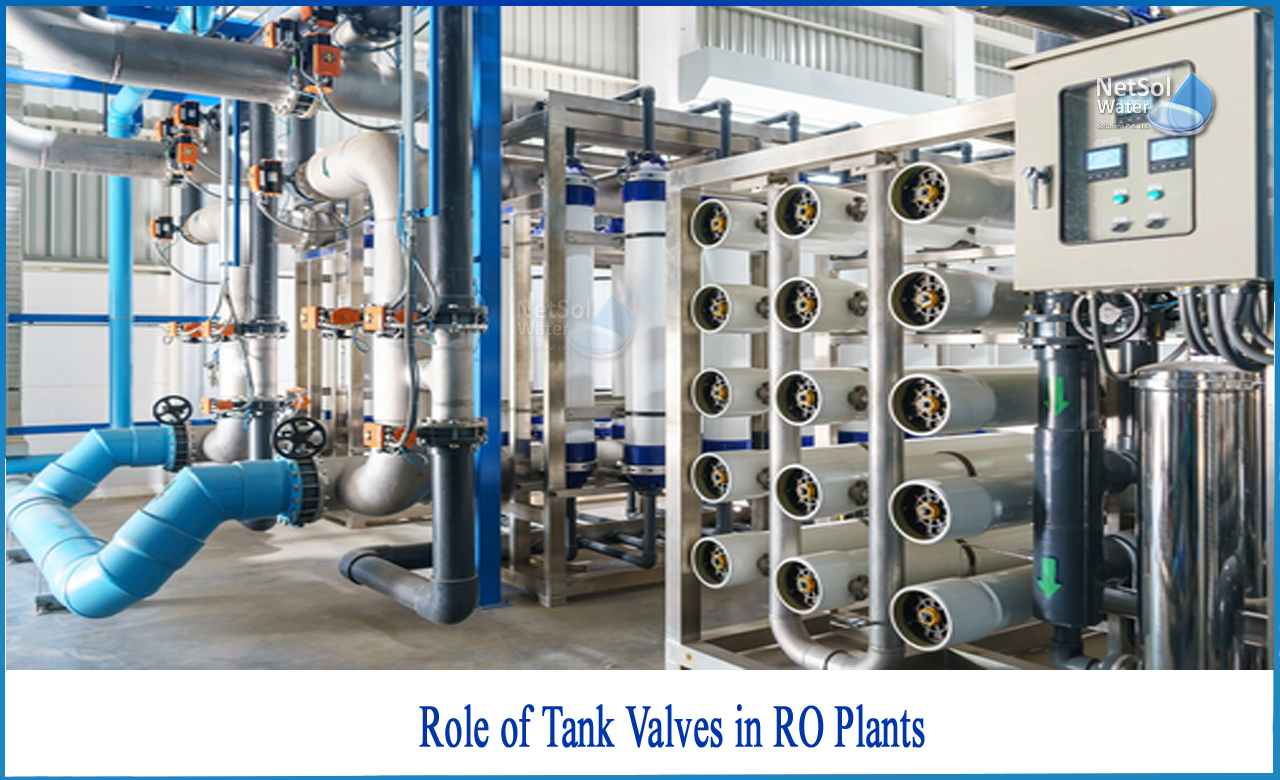Reverse osmosis (RO) is a method of purifying water by removing contaminants.
For industrial purposes, clean water is necessary. Reverse osmosis is a frequent option for boilers, pharmaceuticals, food and beverage, and agriculture industries that demand clean water. Valves are used to regulate the flow of water in these systems. A variety of valves are used to precisely regulate the flow of polluted water purifying it into pure water, depending on the complexity of the system.
The process of reverse osmosis is not a natural occurrence and the osmotic pressure acts against the intended direction of water flow, thus, an external force is required to move the water in the desired direction. Pumps or gravity-fed water are commonly used in RO systems to accomplish this.
What is the Role of tank valves in Commercial RO Plants?
Although many RO units are manufactured without a tank valve, it is a vital feature of the RO unit.
To do a simple repair on the RO unit without a tank valve, the tank must be emptied. The valve separates the tank from the remainder of the RO system. When doing routine maintenance or servicing on the RO unit, this is a huge benefit.
Valve selection for reverse osmosis
Different valves are utilized to properly and safely regulate the flow depending on the step within the RO system. The valve's functioning generates advantages and disadvantages for use, allowing different valves to be used advantageously at different stages.
1: Valve solenoid
A plunger opens and closes an aperture in a solenoid valve, which either blocks or enables the passage of a medium. This plunger moves up and down by using an electromagnetic field created by a magnet to open and close. When power is provided or removed, the valve will swap positions depending on whether it is generally closed or normally open. The response time of these valves is quite fast.
2: Butterfly and ball valves
Ball and butterfly valves are often operated by a lever, although they can also be operated electrically or pneumatically. A ball valve is made out of a ball with a bore in it that allows or prevents flow depending on its position. A butterfly valve allows flow by turning and opening a narrow disc, or wafer. These valves have excellent sealing capabilities.
3: Valve with an automatic shutdown
The pressure of the flow controls the opening and closing of an automated cutoff valve. It operates in combination with downstream valves (for example, a valve controlling flow into a tank) and can detect a closed flow downstream based on an increase in pressure, which causes it to close. It is mechanically operated and does not require electricity, conserving energy and minimizing water waste.
4: Valve for checking
A one-way valve is a check valve. It's usually spring-operated, and if the flow is coming from the incorrect side, the valve will close with the pressure to stop it.
5: Float valve
When a tank reaches a predetermined fill level, a float valve is utilized to shut off the incoming flow. The float of the valve rises as the water level in the tank rises, and it is attached to a lever that mechanically closes the valve. The float valve will reopen when the water level drops.
Technical assistance and guidance
Netsol Water collaborates with a wide range of international organizations to tackle complicated RO problems by strategically integrating modern treatment technology with practical solutions.
Netsol Water is Greater Noida-based leading water & wastewater treatment plant manufacturer. We are industry's most demanding company based on client review and work quality. We are known as best commercial RO plant manufacturers, industrial RO plant manufacturer, sewage treatment plant manufacturer, Water Softener Plant Manufacturers and effluent treatment plant manufacturers. Apart from this 24x7 customer support is our USP. Call on +91-9650608473, or write us at enquiry@netsolwater.com for any support, inquiry or product-purchase related query.



